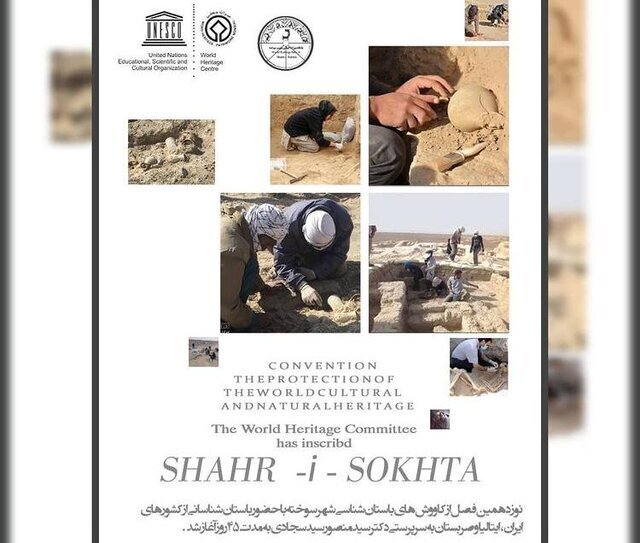Serbian archaeologists join Iranian, Italian fellows in Burnt City

TEHRAN – A number of Serbian archaeologists and cultural heritage experts have joined their Iranian and Italian counterparts to resume digs in the UNESCO-registered Burnt City in southeast Iran.
Called “Shahr-e Sukhteh” or “Shahr-i Sokhta” in Persian, Burnt City is associated with four rounds of civilization, all burnt down by catastrophic sets of fire. The site is situated in Sistan-Baluchestan province, which was once a junction of Bronze-Age trade routes crossing the Iranian plateau.
“Shahr-e Sukhteh is the sole archeological site in Iran whose scientific archaeological excavations have continuously been carried out by Iranian and Italian archaeologists,” ISNA quoted Research Institute for Cultural Heritage and Tourism (RICHT) as saying on Monday.
In addition to the Italians, archaeologists from Serbia are also present this [archaeological] season. Moreover, researchers and archaeologists from other countries, such as Britain, France, and Germany, have been invited to take part in the excavations, the report said.
“So far, four to five percent of Burnt City has been excavated. . . and [conducting surveys on] unexplored areas require a lot of time and funds,” provincial tourism chief Alireza Jalalzaei was quoted by ISNA as saying on Monday.
Led by the senior Iranian archaeologist Seyyed-Mansour Seyyed-Sajjadi, the 19th season of archaeology was commenced on November 19 on the magnificent site.
According to Jalalzaei, in this season of excavation, residential areas in the central and eastern parts [of Shahr-e Sukhteh] are to be explored. “The excavation season is estimated to take 60 days, of which 45 days are for field activities and 15 days for summarizing field information, preparing reports and sending to the Research Institute [for Cultural Heritage and Tourism].”
The 18th archaeological season began in November 2019 in collaboration with Italy’s University of Salento to shed new light on a [formerly] residential area of the 5,000-year-old site. “The goal is to reach older urban sections because most of the excavations so far have been related to the second, third, and fourth periods and less information about the times before these eras,” Seyyed-Sajjadi said in 2019.
The expert also addresses some limitations that such a project faces in the country, adding “Given some limitations, [our] excavation is focused on studies of zoology, botany, and anthropology because these excavations could yield a lot of information about the animals, plantation and human life in Burnt City.”
Furthermore, archaeologists have already discovered the remains of a prehistoric monkey in Burnt City, concluding that the animal was held in captivity in a cage when it died. Based on surveys and scientific studies on the monkey’s skeleton, the animal was dead in captivity in a cage and it was buried by its owner like a child within a beautiful container, according to Seyyed Sajjadi.
“Since the Burned City had lots of commercial relations with the eastern territories of Iran such as northern India and central Asia, and there is a lot of information in this regard, we found that the monkey came from there.”
“The other issue is that in the ancient world, monkeys were essentially regarded as a luxury and aristocratic belongings. And they were imported to be presented to people of certain social classes such as elites, merchants, governors, and religious authorities,” he explained.
Founded around 3200 BC, Burnt City was populated during four main periods up to 1800 BC. Previous rounds of excavations showed that its residents had great skills in weaving, creating fine arts such as decorative objects, stone carving, and pottery painting.
AFM
